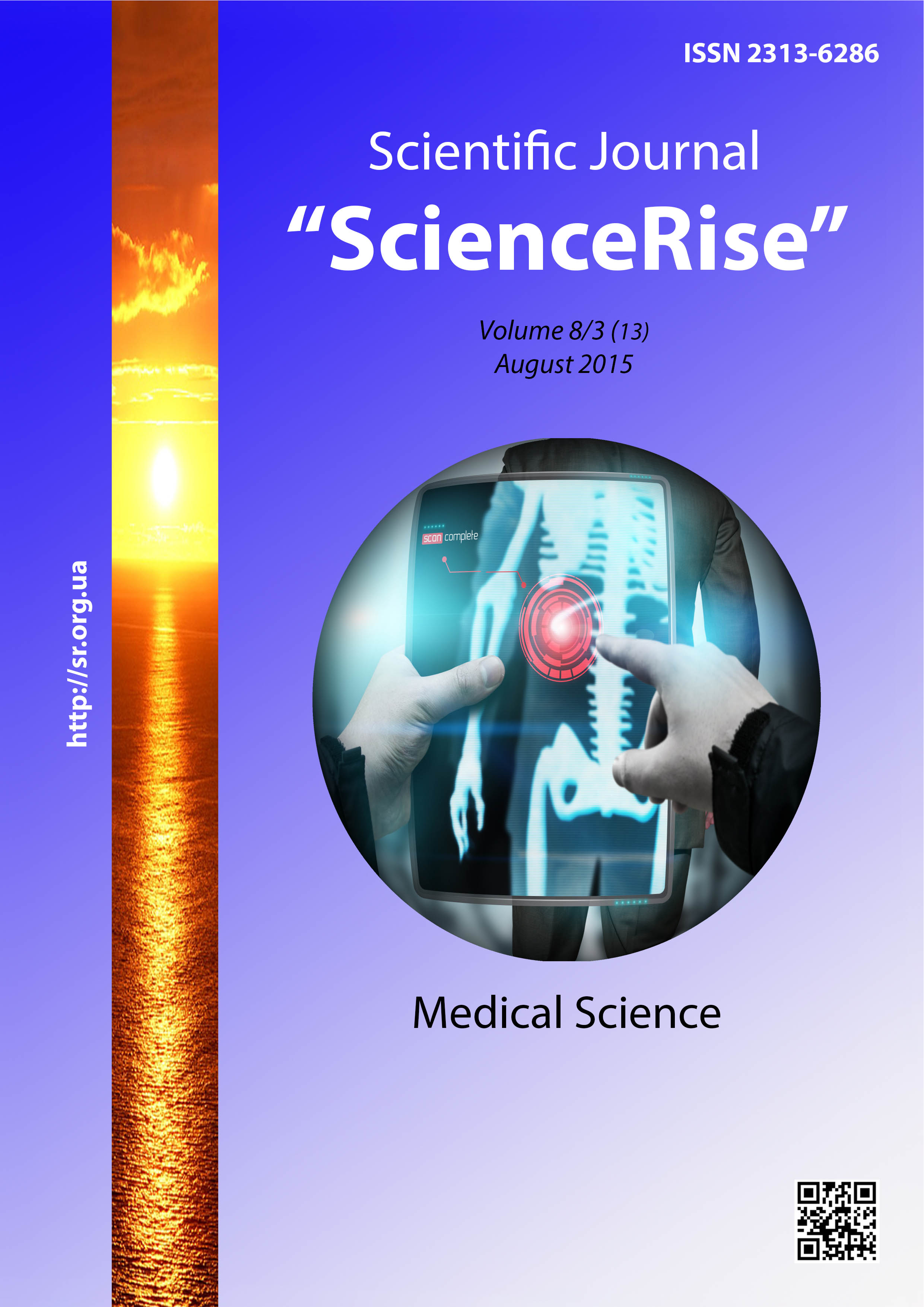Результаты использования искусственной электрической фибрилляции сердца при операциях аортокоронарного шунтирования
DOI:
https://doi.org/10.15587/2313-8416.2015.47902Słowa kluczowe:
аортокоронарное шунтирование, локальная кардиопротекция, искусственная электрическая фибрилляция сердца, гемодинамические параметры.Abstrakt
В статье рассматривается влияние искусственной электрической фибрилляции (ИЭФ) сердца, как метода локальной кардиопротекции, на показатели функционального состояния сердца и системной гемодинамики при выполнении аортокоронарного шунтирования (АКШ) в условиях искусственного кровообращения.
В работе показано, что использование ИЭФ сердца в период основного этапа АКШ, не оказывает отрицательного влияния на основные гемодинамические параметры.
Bibliografia
Ystinov, A. V. (2012). Kardioxiryrgiy I intervencionnay kardiologiy: problem I perspektivi razvitiy [Cardiac Surgery and Interventional Cardiology: Problems and Prospects]. Ukrainian Medical Journal, 1, 8–10.
Hausenloy, D. J., Boston-Griffiths, E., Yellon, D. M. (2012). Cardioprotection during cardiac surgery. Cardiovascular Research, 94 (2), 253–265. doi: 10.1093/cvr/cvs131
Fujii, M., Chambers, D. J. (2005). Myocardial protection with intermittent cross-clamp fibrillation: does preconditioning play a role? European Journal of Cardio-Thoracic Surgery, 28 (6), 821–831. doi: 10.1016/j.ejcts.2005.06.048
Okamura, Y., Sugita, Y., Mochizuki, Y., Iida, H., Mori, H., Tabuchi, K., Matsushita, Y., Kobayashi, S., Shimada, K. (1996). Indication and result of hypothermic fibrillatory arrest in coronary artery bypass grafting. Nihon Kyobu Geka Gakkai Zasshi., 44 (5), 623–628.
Umakanthan, R., Leacche, M., Petracek, M. R. et al. (2008). Safety of Minimally Invasive Mitral Valve Surgery Without Aortic Cross-Clamp. The Annals of Thoracic Surgery, 85 (5), 1544–1550. doi: 10.1016/j.athoracsur.2008.01.099
Jacob, S., Kallikourdis, A., Sellke, F., Dunning, J. (2008). Is blood cardioplegia superior to crystalloid cardioplegia? Interactive CardioVascular and Thoracic Surgery, 7 (3), 491–498. doi: 10.1510/icvts.2008.178343
Akins, C. W. (1992). Hypothermic Fibrillatory Arrest for Coronary Artery Bypass Grafting. Journal of Cardiac Surgery, 7 (4), 342–347. doi: 10.1111/j.1540-8191.1992.tb01024.x
Mishra, P. K. (2006). Fibrillatory arrest technique: is it worth tasting the old wine in new bottle? European Journal of Cardio-Thoracic Surgery, 29 (5), 860–860. doi: 10.1016/j.ejcts.2006.01.037
Petrucci, O., Baker, R. S., Lam, C. T., Reed, C. A., Duffy, J. Y., Eghtesady, P. (2010). Fetal Right Ventricular Myocardial Function Is Better Preserved by Fibrillatory Arrest During Fetal Cardiac Bypass. The Annals of Thoracic Surgery, 90 (4), 1324–1331. doi: 10.1016/j.athoracsur.2010.06.032
Akins, C. W., Carroll, D. L. (1987). Event-free Survival Following Nonemergency Myocardial Revascularization during Hypothermic Fibrillatory Arrest. The Annals of Thoracic Surgery, 43 (6), 628–633. doi: 10.1016/s0003-4975(10)60236-6
Phillips, S. J., Zeff, R. H., Kongtahworn, C., Iannone, L. A., Brown, T. M., Gordon, D. F. (1979). Anoxic Hypothermic Cardioplegia Compared to Intermittent Anoxic Fibrillatory Cardiac Arrest Clinical and Metabolic Experience with 1080 Patients. Annals of Surgery, 190 (1), 80–83. doi: 10.1097/00000658-197907000-00018
Antunes, P. E., Ferrao de Oliveira, J., Prieto, D., Coutinho, G. F., Correia, P., Branco, C. F., Antunes, M. J. (2015). Coronary artery bypass surgery without cardioplegia: hospital results in 8515 patients. European Journal of Cardio-Thoracic Surgery. doi: 10.1093/ejcts/ezv177
Roger, V. L., Go, A. S., Lloyd-Jones, D. M., Adams, R. J., Berry, J. D., Brown, T. M. et. al. (2010). Heart Disease and Stroke Statistics--2011 Update: A Report From the American Heart Association. Circulation, 123 (4), e18–e209. doi: 10.1161/cir.0b013e3182009701
Scarci, M., Fallouh, H. B., Young, C. P. (2009). Does intermittent cross-clamp fibrillation provide equivalent myocardial protection compared to cardioplegia in patients undergoing bypass graft revascularisation? Interactive Cardio Vascular and Thoracic Surgery, 9 (5), 872–878. doi: 10.1510/icvts.2009.209437
##submission.downloads##
Opublikowane
Numer
Dział
Licencja
Copyright (c) 2015 Олег Анатольевич Лоскутов

Utwór dostępny jest na licencji Creative Commons Uznanie autorstwa 4.0 Międzynarodowe.
Our journal abides by the Creative Commons CC BY copyright rights and permissions for open access journals.
Authors, who are published in this journal, agree to the following conditions:
1. The authors reserve the right to authorship of the work and pass the first publication right of this work to the journal under the terms of a Creative Commons CC BY, which allows others to freely distribute the published research with the obligatory reference to the authors of the original work and the first publication of the work in this journal.
2. The authors have the right to conclude separate supplement agreements that relate to non-exclusive work distribution in the form in which it has been published by the journal (for example, to upload the work to the online storage of the journal or publish it as part of a monograph), provided that the reference to the first publication of the work in this journal is included.

